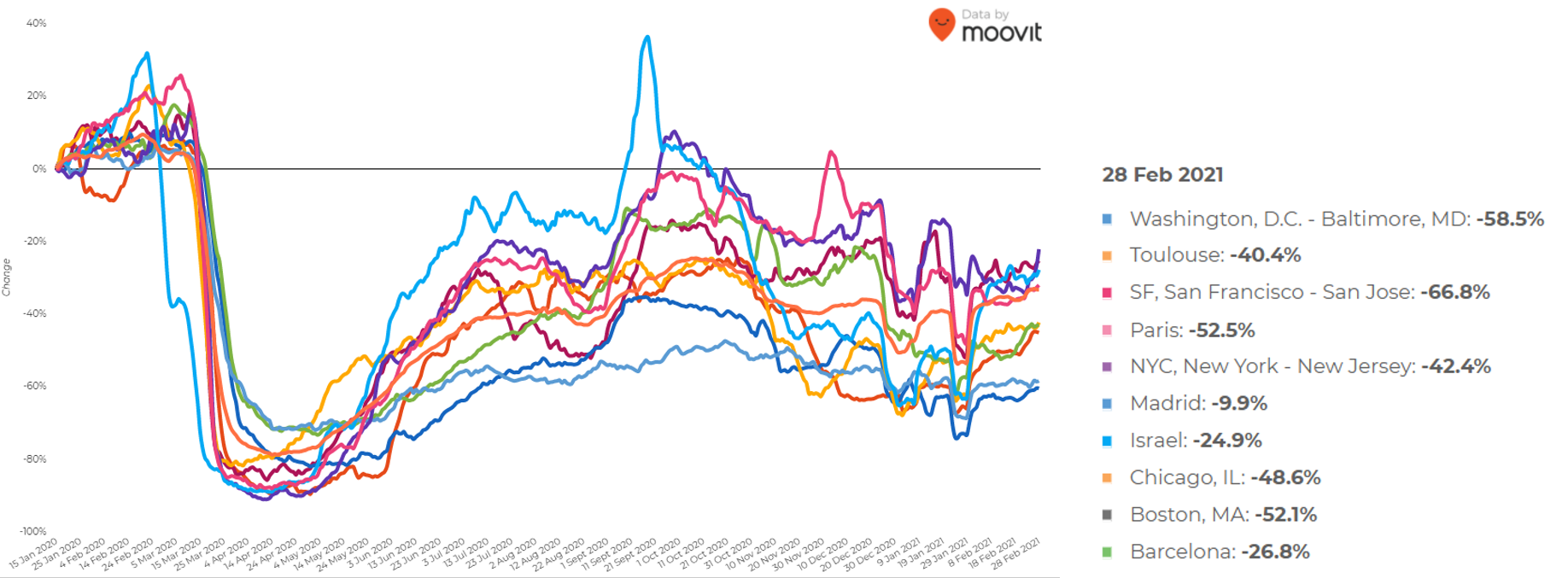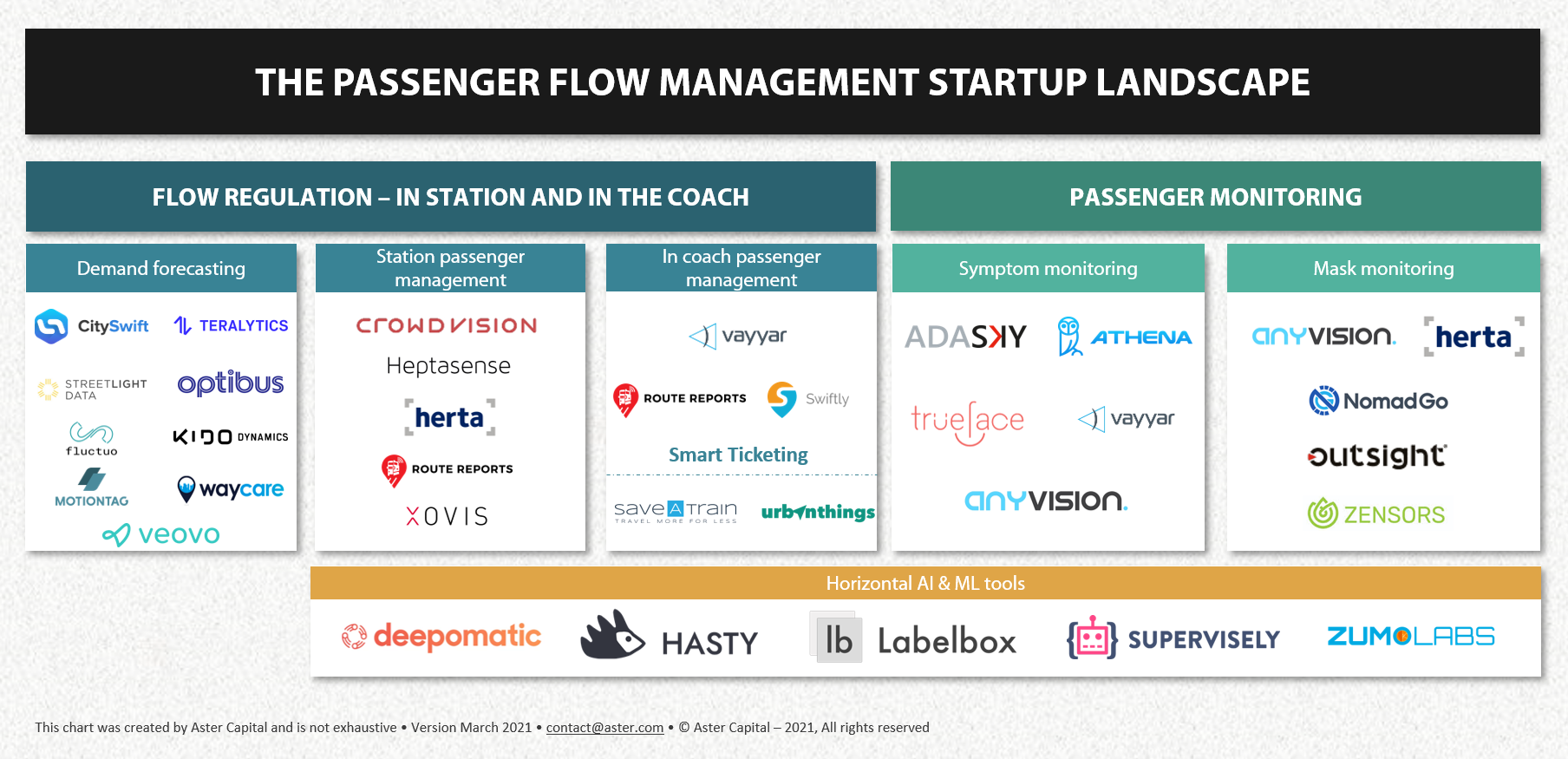Public transportation was already facing many challenges before the pandemic broke out, such as budget constraints (high operating and maintenance costs with low investments), declining ridership (resulting from the emergence of new ride-hailing and micromobility offers) and a mismatch between the objectives and expectations of the authorities, public transport operators (PTO) and commuters.
The pandemic has accentuated the pressure on the sector, bringing passenger flows to a historically low level. Although commuters are gradually returning to using public transportation (see exhibit 1), the number of commuters remains lower than in other years, as does income. Despite the $25 billion provided to US transit agencies to respond to Covid-19, they are expected to face a shortfall of $23.8 billion by the end of 2021.
Impact of COVID-19 on public transit usage around the world (January 15th,2020)

Source: Moovit
PTOs play a key role in containing the spread of Covid-19 by limiting coach capacity, monitoring social distancing in stations and ensuring that routes are optimized (i.e., shortest possible). In addition, in order to recover usage levels, PTOs are required to guarantee safe travel and restore passenger trust. Two categories of tools can help them do this: 1) flow regulation tools and 2) passenger monitoring tools. In fact, airports had already adopted some of these tools before the pandemic.
By taking a closer look at the flow regulation & passenger monitoring landscape, we have identified 6 areas where startups are flourishing:
- Demand Forecasting: startups that provide tools for route optimization, scheduling systems, also based on passenger demand and patterns. These tools enable faster changes to routes and schedules.
- Station Passenger Management: startups that develop tools for passenger regulation in stations, mainly to signal situations where passengers do not respect social distancing measures
- In Coach Passenger Management: startups that create solutions to manage and limit the number of passengers in coaches, to enable PTOs to enforce coach capacity thresholds
- Symptom & Mask Detection: startups that can help PTOs detect if passengers have symptoms and/or are not wearing masks. Solutions in this area are mainly camera-based systems, to automatically signal passengers who are ill or not wearing masks, to protect other commuters
- Horizontal AI & ML tool: technology providers that power the above tools

Even if we hope that Covid-19 will just be a memory, habits still need to be changed as long as the pandemic is around. For this, PTOs are obliged to invest into solutions to make public transportation safe enough for commuters to use their services.
